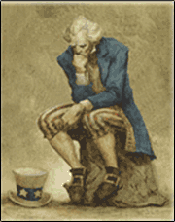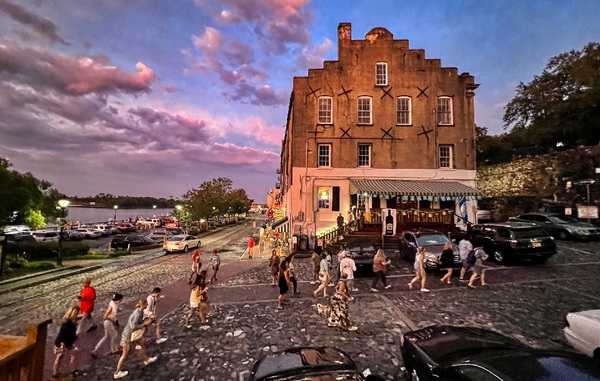
–>
June 15, 2022
A few years ago, a young Florida relative of mine went off to a prestigious northeastern college as a pre-med student. As a good athlete, she joined one of the girls’ sports teams and was a starter on the varsity squad as a freshman.
‘); googletag.cmd.push(function () { googletag.display(‘div-gpt-ad-1609268089992-0’); }); }
The team was a mixed group of black and white students who had come from all over the U.S. As the girls met for the first time, my relative was accosted by a black teammate from Brooklyn who, discovering she was from Florida, said to her face, “You’re a racist.” In other words, if you were from Florida (or the South) you must be a racist.
The two girls had never met before. The black girl knew nothing about my relative, who I can tell you is anything but a racist. Nevertheless, she had no compunction about throwing out the R word, a word that in today’s world can instantly destroy a reputation or even a career. As it turned out, my relative survived her four years and is now successfully working in the medical field. Her bitter, hateful accuser eventually burned out and left the school to an unknown result.
This was at the height of the Black Lives Matter furor that the BBC now describes “as a phrase, and notably a hashtag, used to highlight racism, discrimination and inequality experienced by black people.”
‘); googletag.cmd.push(function () { googletag.display(‘div-gpt-ad-1609270365559-0’); }); }
All of this came to mind during a recent three-day holiday in Savannah, Georgia, a key city of the old South and the Confederacy. City tours feature a stop at the Green-Meldrim house that was the headquarters of Union General William Tecumseh Sherman, who was housed there in 1864 at the end of his march through Georgia during which he burned down much of Atlanta. The local citizens, as the guides tell the story, offered him the beautiful home if he would agree not to burn down the city. It apparently worked. Many of Savannah’s Civil War era homes and mansions remain and are in use today.
With its massive moss-draped oak trees and historical buildings, Savannah is truly beautiful. A horse-drawn carriage ride through the large old town area just off the river is an unforgettable event for any visitor. The city gained a good deal of national attention as a filming location for Forrest Gump and as the location for both the book and the film Midnight in the Garden of Good and Evil.
 For someone who lives in a predominantly white area of modern Florida, a visit to Savannah is an eye-opener in some other important ways. The Savannah we experienced is a heavily black city. At our gorgeous highly-rated hotel, a converted former cotton warehouse called the River Street Inn, every employee we encountered was black. We felt very welcomed and we had a particularly good time with the entertaining 61-year-old woman who runs the hotel’s special Happy Hour for its guests. A very high percentage of people running the restaurants, ice cream shops, souvenir stores, boutiques, etc., were black, as were many of the patrons of these establishments. Not surprisingly, the mayor of Savannah is black.
For someone who lives in a predominantly white area of modern Florida, a visit to Savannah is an eye-opener in some other important ways. The Savannah we experienced is a heavily black city. At our gorgeous highly-rated hotel, a converted former cotton warehouse called the River Street Inn, every employee we encountered was black. We felt very welcomed and we had a particularly good time with the entertaining 61-year-old woman who runs the hotel’s special Happy Hour for its guests. A very high percentage of people running the restaurants, ice cream shops, souvenir stores, boutiques, etc., were black, as were many of the patrons of these establishments. Not surprisingly, the mayor of Savannah is black.
I was struck by the absence of a conspicuous police presence. In fact, I did not see a single police officer during my visit although I did see a couple of police cars on the third day. With my brother and his wife and my wife, we sat on a balcony overlooking the river front in the evening and watched the crowds of whites, blacks, and Asians mingle and wander, enjoying themselves on the scenic river front. There were wedding and bachelorette parties, groups of Girl Scouts on pilgrimage to the home of Juliette Gordon Low, couples young and old, and quite a few families with young children. The weather was perfect. We heard the whistle of a large tourist boat. Occasionally an enormous container ship escorted by powerful-looking tugboats would quietly slip by on the way to or from the container port.
It was an America that any good American could dream of — Americans of all shapes, colors and sizes, out together enjoying a beautiful summer evening and the engaging ambiance of Old South Savannah, Georgia.
There was no evidence anywhere of “racism, discrimination or inequality experienced by black people.” It was Martin Luther King’s dream become reality.
‘); googletag.cmd.push(function () { googletag.display(‘div-gpt-ad-1609268078422-0’); }); } if (publir_show_ads) { document.write(“
That’s when I experienced a moment of insight that I call the Savannah Lesson.
Savannah in reality is no different than anywhere else in the U.S. in terms of the opportunity of any American to carve out a productive and good life and to enjoy the fruits of that life. There are no racial or, for that matter, gender barriers to getting good jobs, gaining public office or in any way experiencing the fullness of the American dream. Ultimately, it’s up to the individual to make what they can of their lives because in America, all lives matter.
That’s the Savannah Lesson. The hateful rhetoric of Black Lives Matter is a vicious and destructive lie.
Frank Hawkins is a former U.S. Army intelligence officer, Associated Press foreign correspondent, international businessman, senior newspaper company executive, founder and owner of several marketing companies, and published novelist.
Image: Frank Hawkins
<!– if(page_width_onload <= 479) { document.write("
“); googletag.cmd.push(function() { googletag.display(‘div-gpt-ad-1345489840937-4’); }); } –> If you experience technical problems, please write to helpdesk@americanthinker.com
FOLLOW US ON
<!–
–>
<!– _qoptions={ qacct:”p-9bKF-NgTuSFM6″ }; ![]() –> <!—-> <!– var addthis_share = { email_template: “new_template” } –>
–> <!—-> <!– var addthis_share = { email_template: “new_template” } –>





